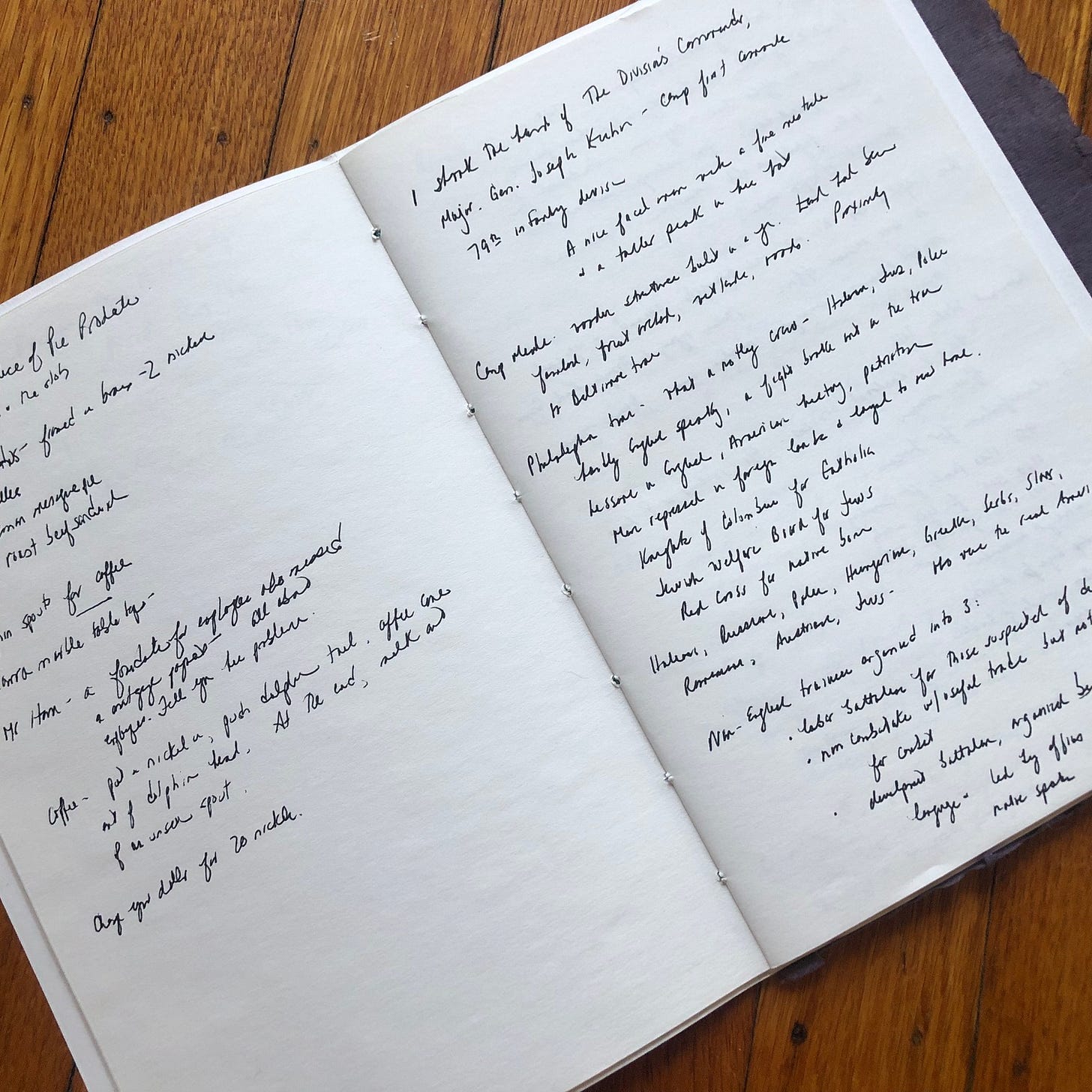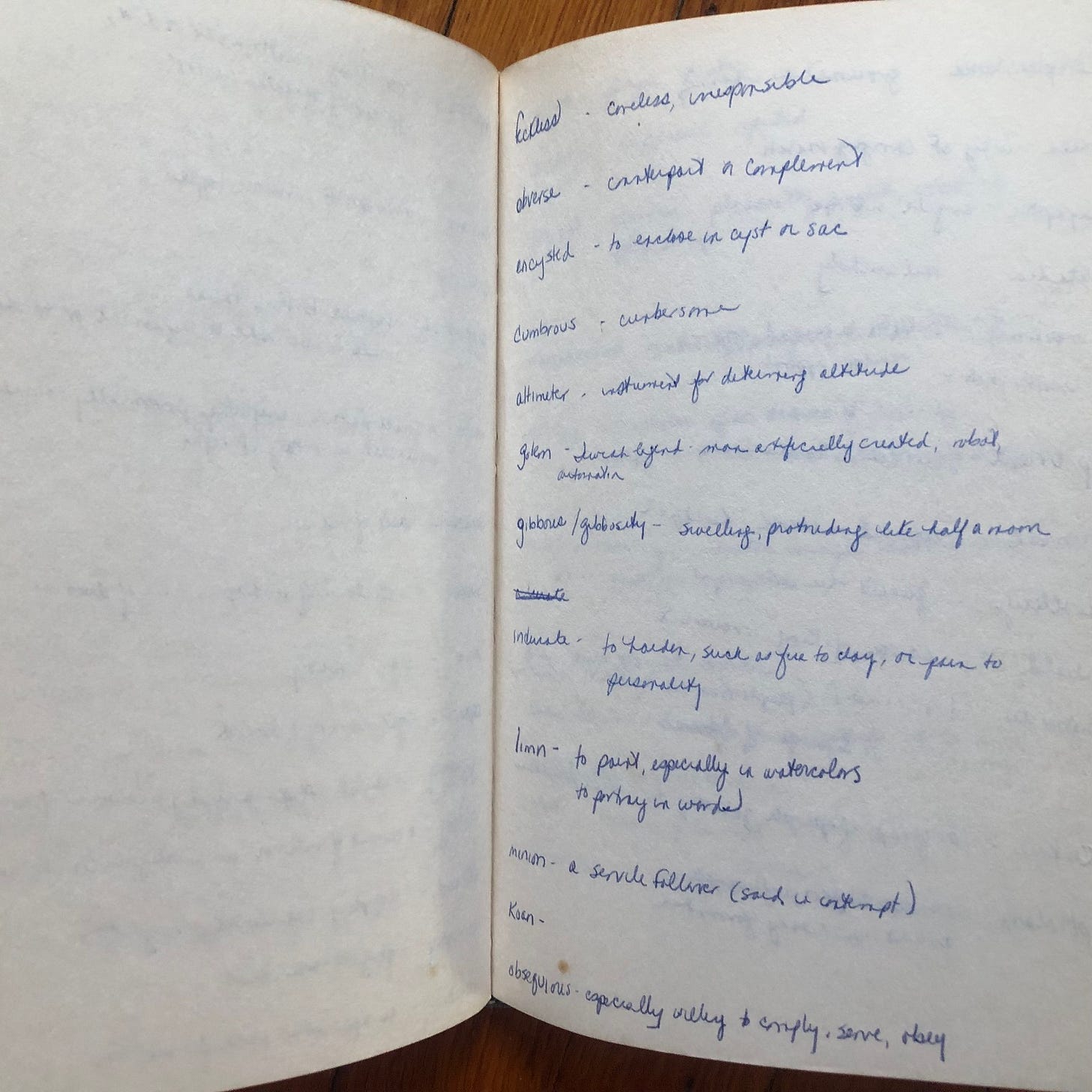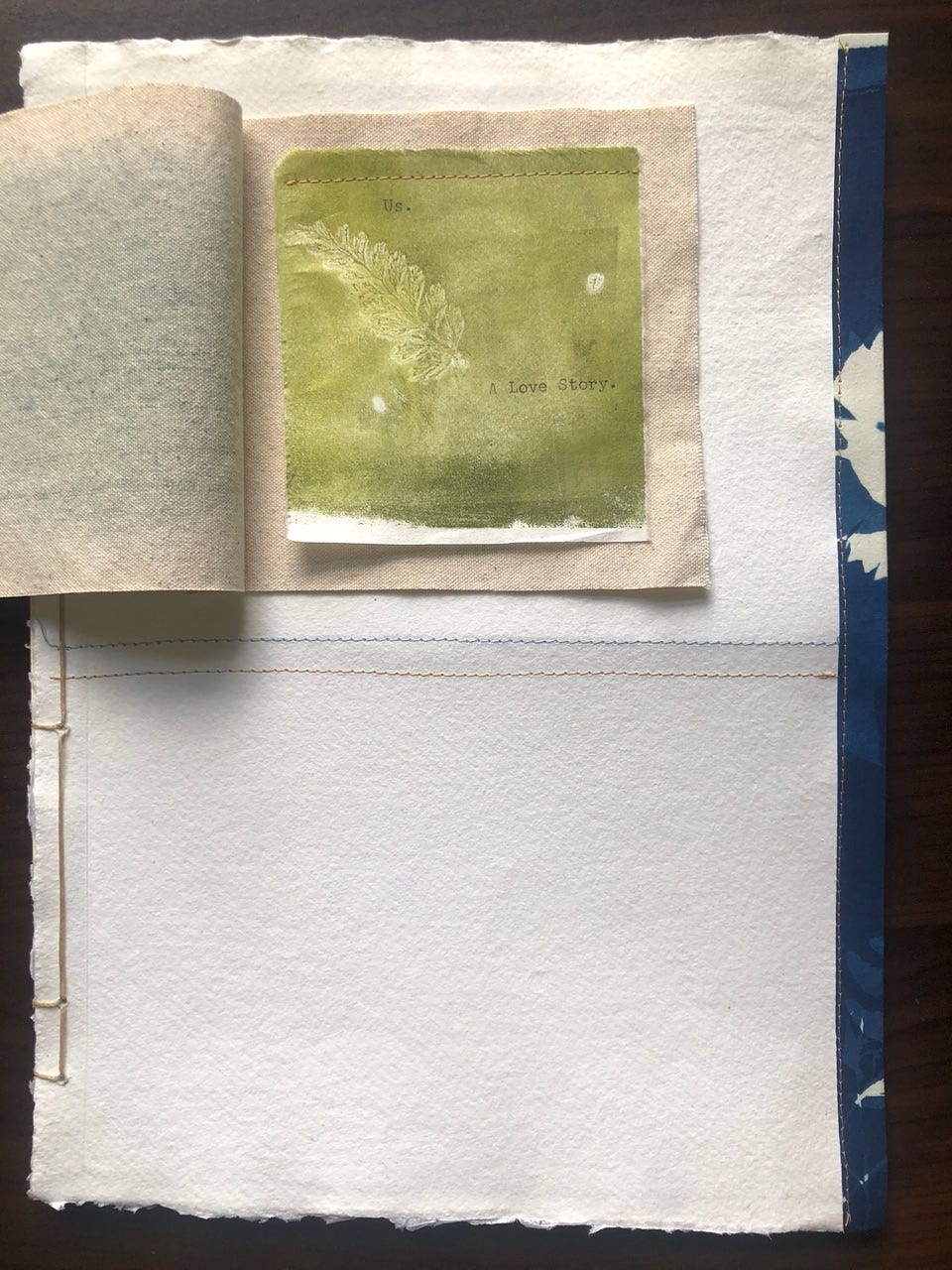Hello there! Welcome to The Magpie, a newsletter that serves as a collection of shiny objects about writing, creativity, hopes, and obsessions. My current obsession is diaries and the people who write them. Since I started keeping one at age eight, my diary has been a place of exploration and intensity, of lists and favorite quotes, of ticket stubs and wildflowers. It is a place to remember and a place to dream.
My most recent book, The Leaving Season: A Memoir in Essays, is out now! I relied on decades of my own diaries to help me write this book. My next book focuses on historical diaries of women, famous and not, and why we continue to write—and read!—these archives.
This is a Show Me Your Diary interview, a series that explores diaries and the creatives who keep them. Every week, I ask a new person to give us a peek inside their diary process, complete with photos. Yes, we are very nosy!
Want to show me your diary, or know somebody who does? Send me an email—you can just reply to this newsletter. Let’s get started…
Today’s interview is with Beth Kephart, incredible paper artist and author of nearly 40 (40!) books, including the exquisite My Life in Paper: Adventures in Ephemera, which I’ve found to be the perfect gift for my favorite fellow paper-lovers. That’s the beauty of Beth’s journals—the words are as lovely as the paper on which they are written.
A few years ago, within a single week, I was recommended to read Beth by two of my most-trusted writer friends:
and . You better believe I looked Beth up immediately after hearing from these two that I would love her work and, of course, they were absolutely right. Once I started on her oeuvre, I understood immediately why Abby and Cassie thought of her during our discussions of all things diary. Beth is an incredibly expansive and deep thinker about the topic, literally from the inside out, since she is a paper maker and crafts gorgeous journals herself.She also thinks deeply about other women’s journals. As Beth writes in her LitHub essay What Passes for Love: On the Marriage of Leonard and Virginia Woolf, “And yet—what happens between a writer and the other people in her life will leave its mark on the work itself. There will be more or fewer pages, greater or lesser risks, differing degrees of happiness, variant measures of self-worth. We may write alone, but we don’t live a writer’s life alone. Lovers, friends, workshops, teachers: How do we choose? What are the consequences?” These are such fundamental questions, the answers to which are often only found in the private pages of diaries.
For this interview, we talked about the utility and futility of capturing memories on the page, Beth’s work as a paper artist building journals for other writers, and the way journals can return the past to you—how, even if the memories aren’t held in amber, you can still hold onto the outline of the ghosts.
In a first, I am also including an intimate addendum at the end of this post. Our interview was completed a few months ago, and when I circled back to Beth in preparation to publish, she wrote back with a breathless update that shook me to my core. She is allowing me to include it here at the end. You’ll see for yourself what I mean.
And, as always in Show Me Your Diary, Beth gives us a peek inside some of her actual diaries…join us!

THE MAGPIE: Team Diary vs Team Journal? What do you like to call it?
BETH KEPHART: While the word diary excites me for its surround-sound of seduction, whisper, and promise, I believe that, as I’ve grown older, the word “Journal” applies increasingly to me.
How long have you kept a journal?
The record will show that I kept a solitary diary when I was thirteen, then filled blank pages with terrible confessional poems (they were like diaries) throughout the remaining angst-ful adolescence, and then, as I went to college and took on the History and Sociology of Science as my discipline, I evolved into a journal-keeper. Now, as a paper artist, I make blank books with the hope that they will become the stuff of others’ diaries/journals.

What do you hope will happen to your journals once you are gone?
I hope the blank books I’ve made will become the start of others’ stories. I hope (and believe) that if any of my words will be read when I am gone (and yes, the if, the if), those words will be in my published books and on my Substack—the polished material that first erupted from journal pages.
What do you remember about your first diary?
It was green. It was embarrassing. I was the most superficial diary keeper the world has ever seen. I wrote sentences eight year olds would never write. I wanted to be loved. I wanted to be good. I wanted to be seen. Wasn’t there anything else I might have noted? Apparently not.
I wanted to be loved. I wanted to be good. I wanted to be seen. Wasn’t there anything else I might have noted? Apparently not.
What is your favorite kind of diary to use?
For the past four years I have written exclusively inside the blank books I make. Each one is an original. Some are coptic-stitch bound with marbled covers (I love to marble). Some feature double cyanotypes on their covers (I cyanotype repeatedly until I get the shade of blue I want). Some are Japanese bound and showcase a paper weave or a collage. Some boast a pretty little button. It’s important to me that I write my words into something that I’ve made. Somehow this keeps me grounded.
Why do you keep a diary?
My journals are the places where stories begin. Research sits beside ideas beside first sentences beside character sketches. I have an entire journal dedicated to interesting words I find, or words I haven’t used yet (then I use the words: limn, limn, limn feckless feckless feckless). I also keep journals that record my thoughts about the progress my writing students are making — questions I want to ask them, hopes I have for them, questions they’ve asked me.
Have there been periods in your life when you couldn’t write in your diary?
During my son’s earliest years I wrote only about him. The joy he brought. The ways we spent our days. The words he spoke. Is that a diary? Perhaps it is. I thought of it as me making sure I’d forever remember—not by ever opening the pages to read them later, but by taking the time to record them in the moment, strengthening those neural connections.
During my son’s earliest years I wrote only about him. The joy he brought. The ways we spent our days. The words he spoke. Is that a diary? Perhaps it is.
Has anyone ever read your diary? Have you ever read someone else’s diary?
Well, my husband does not even read the books I write, so I’m pretty darned sure he’s not going to sit and try to decipher my atrocious handwriting in a handmade book. And my son would never in a million years be so inclined.
But yes, I love archives. Yes, I love to read Virginia Woolf’s diaries, say. Christina Sharpe’s Ordinary Notes feels like a diary of sorts to me. The searing A Woman in Berlin, originally published anonymously, slayed me. So do the journal-like notes made by people I research for my books, like Dard Hunter, the late-great paper chaser.
And finally, an incredible, devastatingly beautiful addendum:
Dearest Kelly. It is now June 18th. I must report on something new, something that more accurately answers your very fine final question. Several weeks ago, searching for something on my bookshelves, I found myself holding the journal I kept twenty years ago, when my husband, son, and I traveled to Barcelona and Venice to celebrate our twentieth wedding anniversary. Oh, these must be some boring travel notes, I thought, but then I started to read, and, Kelly: The cities were returned to me, my family was, those years.
Sometimes I’d be writing to myself saying There is no poetry here, I wonder where the story is. But looking back on these words that I wrote when I was not trying to be a writer, when I wasn’t overtly searching for a poem, I find that the story is very much there, that the poetry lives in the honest unadornments of it all. So much so that I sat and transcribed the entire journal, designed a cover, cyanotyped on canvas, printed on hanji paper, got the sewing machine to stitch some straight lines, and wielded a drill so that I could bind the book and give it to my husband as an anniversary present.
Now, I don’t know if he’s going to read these pages. I can’t be sure. But I have thusly and so presented my journal pages to my husband who doesn’t read me as a gift. A writer can always hope. A journal can always speak.
A writer can always hope. A journal can always speak.
More About Beth Kephart:
Beth Kephart, a National Book Award finalist, is the award-winning author of some 40 books in multiple genres. My Life in Paper: Adventures in Ephemera (memoir) and You Are Not Vanished Here (essays) were released in 2023 and 2024, respectively. Tomorrow Will Bring Sunday’s News (a novel) was released in April 2025.
Beth is also a paper artist whose work has been featured online, in shops, and in art galleries.
Find Beth online at bethkephartbooks.com and bind-arts.com and on Instagram at @bethkephartnow. Be sure to subscribe to her fantastic Substack at The Hush and the Howl:
Thanks for reading The Magpie by Kelly McMasters! As always, more of what I’m up to can be found on my website, and you can follow me on Instagram for day-to-day updates.
Buy The Leaving Season here, Welcome to Shirley here, Wanting: Women Writing About Desire here, and This is the Place: Women Writing About Home here.










What an ENORMOUS honor to be here with you, Kelly. Just — well. It makes me wish, even more, that you and Abby and I could sit and talk together someday, about all the things we love. (We could also talk about the things we don't love. Because, well, those also exist.) Thank you for thinking of me, for including me. xo
"It’s important to me that I write my words into something that I’ve made." Your one of a kind notebooks look so beautiful. The anniversary book sounds amazing, thank you for sharing that with us fellow journal-keepers and word-lovers.